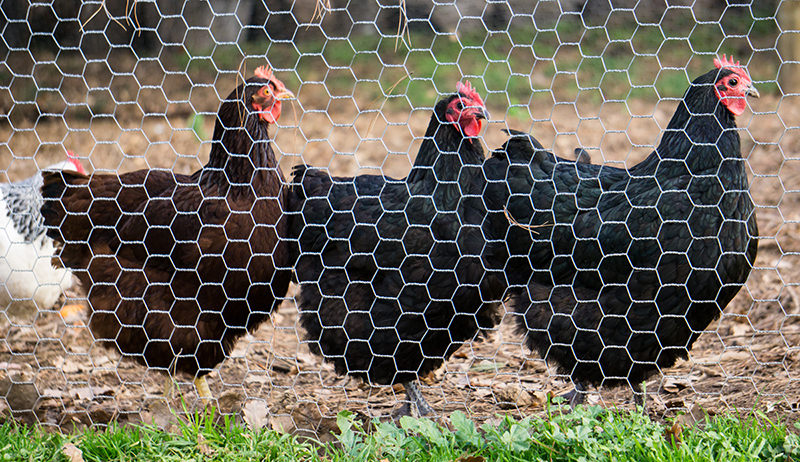In modern animal husbandry, breeding fences, as important infrastructure, are of great significance for ensuring the safety of livestock and poultry, improving breeding efficiency, and promoting the sustainable development of animal husbandry. Among many fence materials, hexagonal mesh breeding fences have gradually become one of the first choices for livestock fences with their unique structure and superior performance.
Hexagonal mesh, also known as twisted mesh, is a mesh material woven from metal wire. It has a strong structure, a flat surface, and good corrosion and oxidation resistance. These characteristics make hexagonal mesh fences have a wide range of application prospects in animal husbandry.
In animal husbandry, hexagonal mesh breeding fences are mainly used to enclose pastoral areas to protect livestock and poultry from weather and theft. Compared with traditional fence materials, hexagonal mesh fences have higher strength and better toughness, can withstand greater impact force, and effectively prevent livestock and poultry from escaping and external intrusion. At the same time, the mesh of the hexagonal mesh fence is moderate, which can not only ensure the ventilation and lighting of livestock and poultry, but also prevent the invasion of small animals and pests, providing a safe and comfortable growth environment for livestock and poultry.
In addition, the hexagonal mesh breeding fence also has good adaptability and flexibility. It can be customized according to different terrains and environmental conditions, and the installation is simple and quick, which greatly saves manpower and time costs. At the same time, the maintenance cost of the hexagonal mesh fence is relatively low, and it only needs to be cleaned and inspected regularly to maintain its good use condition.
In animal husbandry practice, hexagonal mesh breeding fences have been widely used. Whether it is a chicken farm, a pig farm or a ranch, you can see the figure of the hexagonal mesh fence. It not only improves the breeding density and breeding benefits of livestock and poultry, but also promotes the scale and intensive development of animal husbandry.

Post time: Mar-24-2025
